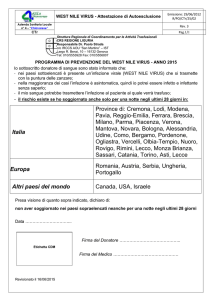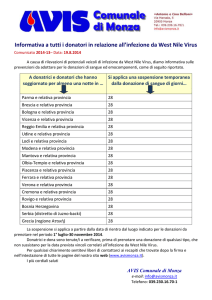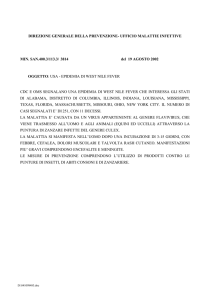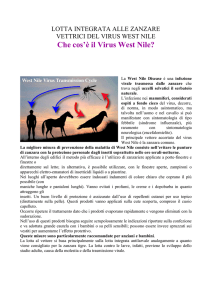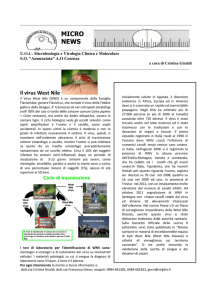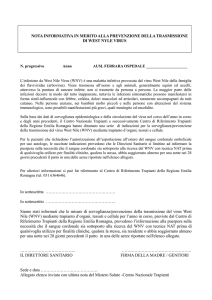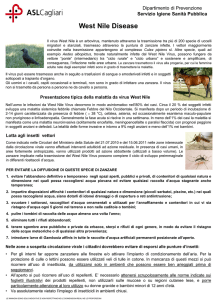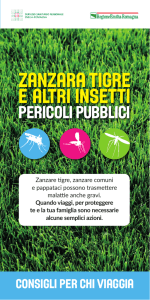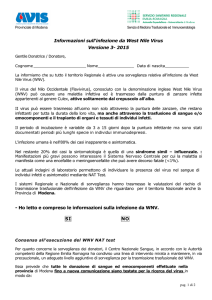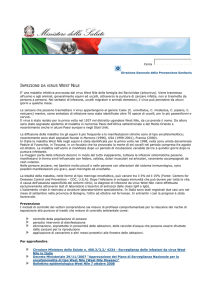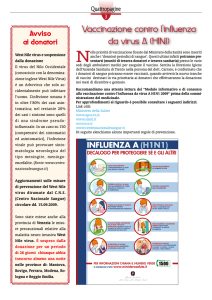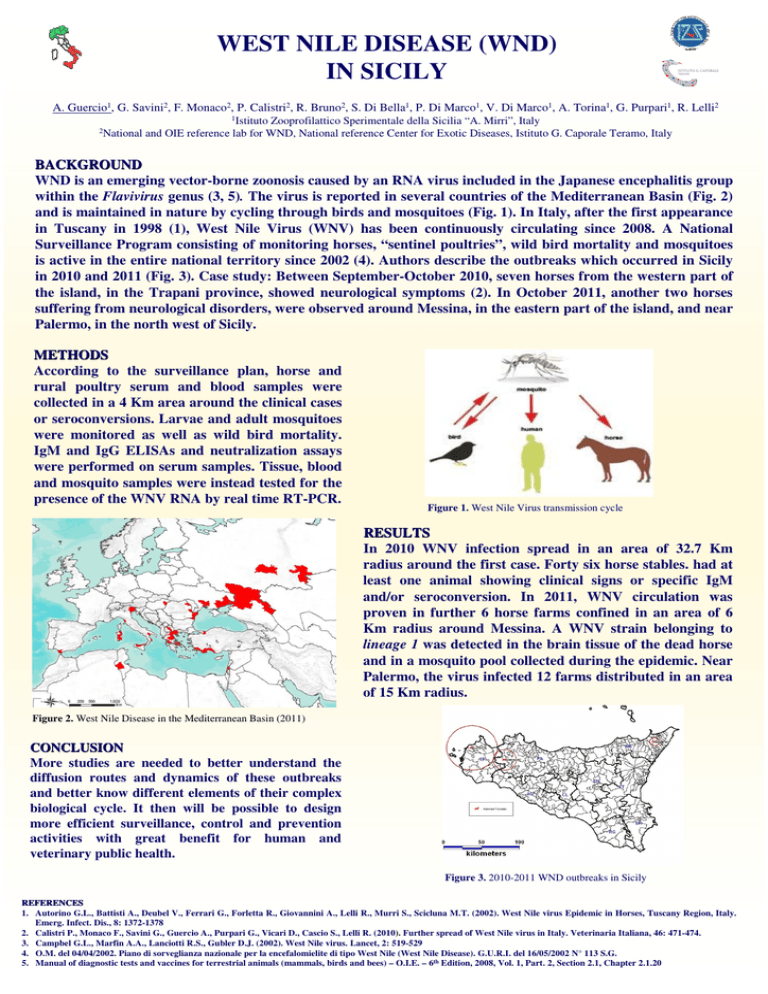
WEST NILE DISEASE (WND)
IN SICILY
A. Guercio1, G. Savini2, F. Monaco2, P. Calistri2, R. Bruno2, S. Di Bella1, P. Di Marco1, V. Di Marco1, A. Torina1, G. Purpari1, R. Lelli2
2National
1Istituto Zooprofilattico Sperimentale della Sicilia “A. Mirri”, Italy
and OIE reference lab for WND, National reference Center for Exotic Diseases, Istituto G. Caporale Teramo, Italy
BACKGROUND
WND is an emerging vector-borne zoonosis caused by an RNA virus included in the Japanese encephalitis group
within the Flavivirus genus (3, 5). The virus is reported in several countries of the Mediterranean Basin (Fig. 2)
and is maintained in nature by cycling through birds and mosquitoes (Fig. 1). In Italy, after the first appearance
in Tuscany in 1998 (1), West Nile Virus (WNV) has been continuously circulating since 2008. A National
Surveillance Program consisting of monitoring horses, “sentinel poultries”, wild bird mortality and mosquitoes
is active in the entire national territory since 2002 (4). Authors describe the outbreaks which occurred in Sicily
in 2010 and 2011 (Fig. 3). Case study: Between September-October 2010, seven horses from the western part of
the island, in the Trapani province, showed neurological symptoms (2). In October 2011, another two horses
suffering from neurological disorders, were observed around Messina, in the eastern part of the island, and near
Palermo, in the north west of Sicily.
METHODS
According to the surveillance plan, horse and
rural poultry serum and blood samples were
collected in a 4 Km area around the clinical cases
or seroconversions. Larvae and adult mosquitoes
were monitored as well as wild bird mortality.
IgM and IgG ELISAs and neutralization assays
were performed on serum samples. Tissue, blood
and mosquito samples were instead tested for the
presence of the WNV RNA by real time RT-PCR.
Figure 1. West Nile Virus transmission cycle
RESULTS
In 2010 WNV infection spread in an area of 32.7 Km
radius around the first case. Forty six horse stables. had at
least one animal showing clinical signs or specific IgM
and/or seroconversion. In 2011, WNV circulation was
proven in further 6 horse farms confined in an area of 6
Km radius around Messina. A WNV strain belonging to
lineage 1 was detected in the brain tissue of the dead horse
and in a mosquito pool collected during the epidemic. Near
Palermo, the virus infected 12 farms distributed in an area
of 15 Km radius.
Figure 2. West Nile Disease in the Mediterranean Basin (2011)
CONCLUSION
More studies are needed to better understand the
diffusion routes and dynamics of these outbreaks
and better know different elements of their complex
biological cycle. It then will be possible to design
more efficient surveillance, control and prevention
activities with great benefit for human and
veterinary public health.
Figure 3. 2010-2011 WND outbreaks in Sicily
REFERENCES
1. Autorino G.L., Battisti A., Deubel V., Ferrari G., Forletta R., Giovannini A., Lelli R., Murri S., Scicluna M.T. (2002). West Nile virus Epidemic in Horses, Tuscany Region, Italy.
Emerg. Infect. Dis., 8: 1372-1378
2. Calistri P., Monaco F., Savini G., Guercio A., Purpari G., Vicari D., Cascio S., Lelli R. (2010).
). Further spread of West Nile virus in Italy. Veterinaria Italiana, 46: 471-474.
3. Campbel G.L., Marfin A.A., Lanciotti R.S., Gubler D.J. (2002). West Nile virus. Lancet, 2: 519-529
4. O.M. del 04/04/2002. Piano di sorveglianza nazionale per la encefalomielite di tipo West Nile (West Nile Disease). G.U.R.I. del 16/05/2002 N° 113 S.G.
5. Manual of diagnostic tests and vaccines for terrestrial animals (mammals, birds and bees) – O.I.E. – 6th Edition, 2008, Vol. 1, Part. 2, Section 2.1, Chapter 2.1.20

